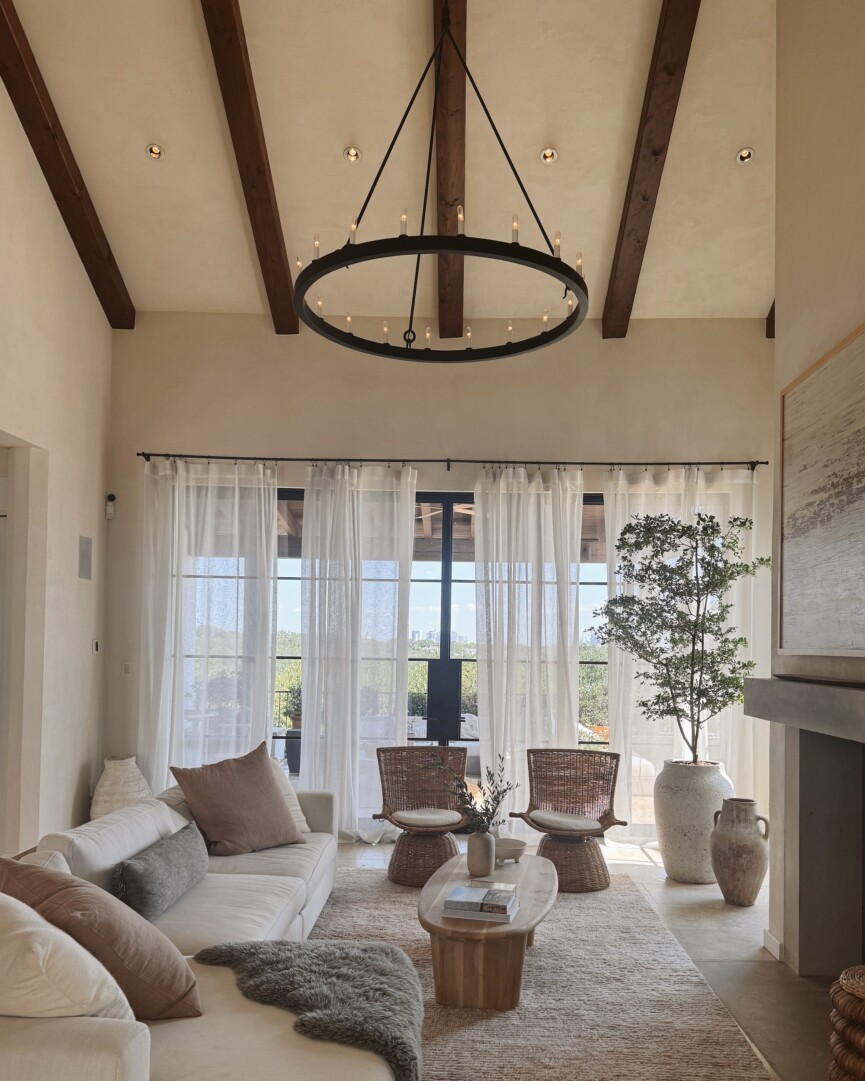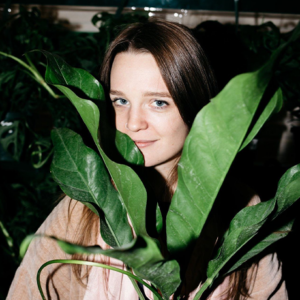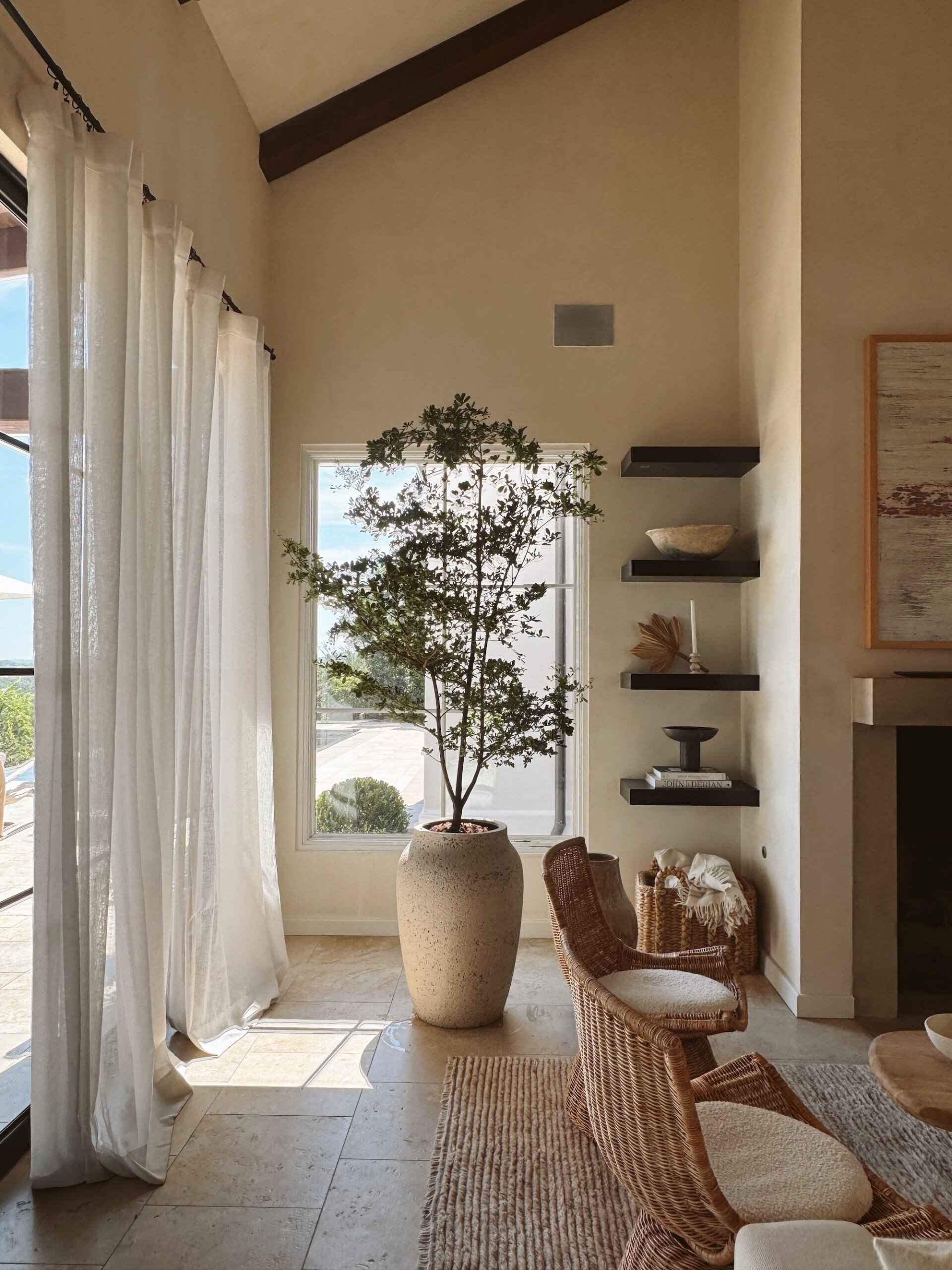One of my greatest accomplishments in life is that I’ve kept my beloved fiddle leaf fig alive for six years now. That may sound silly, but when you know how demanding these plants are, you know it’s no easy feat. I remember seeing them all over my favorite home bloggers and longing for one of my own. Eventually, they became so popular that they started popping up regularly at Costco. My mom was kind enough to get me one. Now, houseplant trends are slowly changing. Instead of the big and gorgeous leaves of the fiddle leaf fig as a statement, designers are opting for a plant with a more delicate, understated beauty. And that plant is the Black Olive Tree, also known as the Shady Lady.

Everything you need to know about the black olive tree, also called “Shady Lady”
I spoke with Lily Cox, co-founder and CMO of Rewild, to find out all about Shady Lady. Rewild is a specialty houseplant store with multiple locations in the Washington DC metropolitan area. Want to learn more about the design world’s new it-girl plant? Read on to find out everything you need to know!

Lily Cox
Lily Cox is co-founder and CMO of Rewild, a specialty houseplant store with multiple locations in the Washington, DC area
What is the Shady Lady?
This plant has several names – the black olive tree, the Shady Lady or its botanical name Bucida buceras. They are impressive trees with an abundance of tiny leaves. Their delicate foliage has recently made them a favorite with designers, especially on the West Coast. “This plant has been doing the rounds for a number of years,” Cox tells us. “If you have other plants, particularly other trees like a ficus or fiddle leaf, you’ll have no problem with a Shady Lady.”
Indoors, black olive trees can grow up to 15 feet tall. It’s best to give them a home with room to grow. These warm-weather-loving plants are native to the Caribbean and South and Central America. They require lots of light and regular watering. Some people think the black olive tree is a high-maintenance plant, but Cox’s experience with the Shady Lady was unexpectedly pleasant. “The team at Rewild were very surprised at how easy and straightforward this plant is,” she explains.
How much light does a black olive tree need?
It’s very easy to fall in love with a plant just because of its aesthetic appeal – especially the Shady Lady. I’ve brought home a few plants that died quickly because I had no idea what environment and care they needed. I just liked the way they looked. If you want to bring a black olive tree into your home, you need to make sure you have a spot that gets plenty of sun.
“They like light,” says Cox. “You don’t necessarily need to have them in a clear south-facing window, although they will do well near a south, east or west window.” It’s best to choose a spot in your home that gets consistent light throughout the day. You’ll want to make sure the light is touching the leaves of your black olive tree and that the light is reaching as much of the foliage as possible. Leaves that don’t get enough light will begin to droop and eventually fall off. As long as you have a sunny spot in your home, your black olive tree should thrive.
“They’ve done really well under our care. They’ve even lost very few leaves, which surprised me because they have so many small, beautiful leaves,” Cox enthuses. “They’re behaving surprisingly well.”
How often should I water a black olive tree?
Cox waters her Shady Lady about once a week, paying close attention to the black olive tree’s soil. “They like to be watered regularly,” she says. “We determine their water needs by sticking a finger up to the first knuckle of our index finger straight into the soil at the base of the plant. The top two inches should feel dry. Then we water them thoroughly.”
If you’re not sure the soil is dry enough, Cox recommends waiting a day or two, then checking again and making sure there’s no moisture left after 24 hours. Instead of keeping your black olive tree to a strict watering schedule, however, Cox recommends building an interactive relationship with your plant. “I tend to move away from a prescriptive approach to plant care and take more of a reactive approach. It makes your life so much easier,” she says.
The amount of water your black olive tree needs will depend on how much light your plant gets each day and how dry the air is in your home. She recommends finding a personalized routine for you and your plant, simply checking the soil and watering when it’s dry. “Good drainage is really important, though,” she notes. “Make sure there’s enough room at the bottom for the water to drain out of the pot once the contents of the pot are thoroughly saturated.”
Where can I get a black olive tree?
Although this plant is quite popular, it is not yet commonly found in specialty plant stores. Cox recommends checking out your local plant store and asking the store owners if they can get a plant for you. “If your local plant store has good enough relationships with different growers, you can ask them to get a plant for you,” she says. There are also artificial options if your home doesn’t have adequate lighting.
How do I style the Shady Lady in my home?
The Shady Lady is quietly popping up in all sorts of interior design magazines and similar publications. While this year’s interior design trends are all about maximalism and bold design choices, the black olive tree is currently the most sought-after houseplant and is known for its delicate and understated qualities. If you’re looking to create a calm atmosphere in your home or add a touch of luxury to your space, the Shady Lady is an obvious houseplant. “I find they fit really well in homes with a European or Mediterranean feel,” says Cox. “Or even a West Coast aesthetic, especially in LA.”
Adding a plant like a black olive tree to your home will breathe life into your space. The Shady Lady is tall, quaint, and would look stunning in a living room, entryway, or even a bedroom. It’s also worth noting that these trees don’t actually bear fruit. (No need to worry about picking black olives!) As long as you have plenty of sunlight and are willing to water it as needed, the Shady Lady is a fantastic addition to your home.





